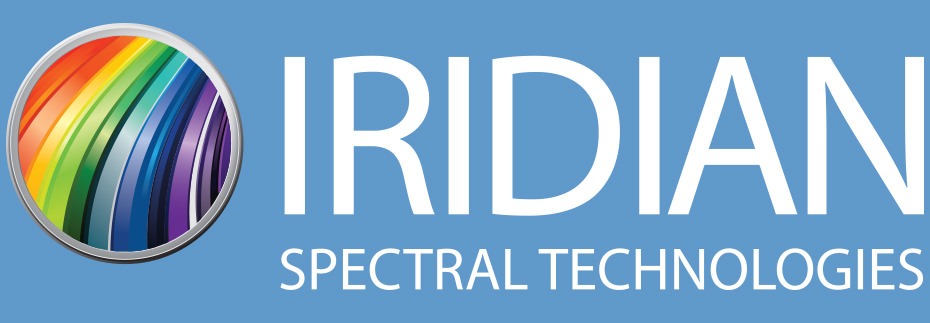アプリケーションノート, 技術情報, 注目の記事
qPCR instrument users need high sensitivity and pristine signal clarity to achieve numerous delicate tasks. The right combination of optical filters significantly improves this functionality.
アプリケーションノート, 技術情報
Channel skip filters are components added to wavelength division multiplexing (WDM) add/drop modules — in both coarse wavelength division multiplexing (CWDM) and dense wavelength division multiplexing (DWDM) applications — to facilitate band splitting and to manage multiple ITU channels.
These filters feature narrow transitions from pass band to blocking band, minimizing lost channels while maintaining high spectral efficiency (i.e., limiting insertion loss) since the express channels undergo only one reflection.
FAQ, 技術情報
よくあるご質問 光学薄膜フィルターとはどのようなものですか? シャボン玉や油膜上に虹模様が見えてるのは、単純な光学薄膜が機能している様子が見えているからです。 入射光の一部の光が厚さのある材料層と相互作用し、波長に依存して強めあう干渉と弱めあう干渉が発生します。 その膜の厚さが光の波長の整数倍(m)に相当する場合、下記式に従って強め合う干渉が発生します。 2n2dcos(Θ2) = m λ...
アプリケーションノート, 技術情報
In wavelength-division multiplexer (WDM) and passive optical network (PON) modular design, single band pass filters and multiple band pass filters are used for the same purpose: permitting narrow wavelength ranges to pass through while rejecting wavelengths outside that range (known as the filter’s upper and lower cutoff frequencies).
Multiple band pass filters are used to transmit two or more standard coarse wavelength division multiplexing (CWDM) channels, separating them from the other CWDM bands — replacing two or more single band pass filters with a single component.
テクニカルノート, 技術情報
Abstract: Considerations when specifying transition pass bands, blocking bands, and transition widths include filter manufacturing tolerances, thermal tolerances and source/detector variations among others. These factors must be taken into account properly and...
アプリケーションノート, 技術情報, 注目の記事
Much like vehicle hand cranks in their day, the use of a gain flattening filter (GFF) paired with a wavelength- division multiplexer (WDM) in optical fiber amplifiers – such as erbium-doped fiber amplifiers (EDFA) — has been accepted not because it is ideal, but because a superior solution had yet to be created. Until now.
This article explains what a Hybrid GFF is and how it works. It also details the advantages of using Iridian Spectral Technologies’ Hybrid GFFs in lieu of a conventional two-filter setup in EDFA and other optical filter applications.
テクニカルノート, 技術情報
The wavefront error (WE) of a surface with an optical coating (“filter”) is ideally measured at the in-band wavelength of the filter. However, quite often this is not possible, requiring that the filter be measured at an out-of-band wavelength (typically 633 nm), assuming that the filter transmits (for transmitted WE, or TWE) or reflects (for reflected WE, or RWE) at this wavelength. This out-of-band TWE/RWE is generally assumed to provide a good estimation of the desired in-band TWE/RWE. It will be shown in this paper that this is not the case for a large class of filters (i.e., bandpass) where the group delay is significantly different at the in-band and out-of-band wavelengths and where the optical filter exhibits a thickness non-uniformity across the surface.
アプリケーションノート, 技術情報
Raman spectroscopy probes the molecular vibrational and rotational modes of a material in order to detect and identify the material. Typically, laser light is incident upon the material and the scattered light is measured.
The excitation source (laser line) intensity is often to orders of magnitude greater than the Raman scattered signal. Therefore, edge pass (or notch) filters are required to block the Rayleigh scattered laser light while transmitting the red-wavelength shifted (Stokes) and/or the blue-wavelength shifted (Anti-Stokes) Raman scattered signal.
アプリケーションノート, 技術情報
We live in the “Communications Age” – rapid access to information and connectivity to each other, anytime, nearly everywhere. But despite the massive strides that have been made in the past half century – from hardline telephony to the current ubiquitous wireless “smart” device connectivity – there is still further evolution to come that will necessitate extending the communications reach even further. While we have laid down a large physical infrastructure of wireline fiber-optic networks and wireless cellular base stations, the next advances in communications, 5G and machine-to-machine communications, will require “help from above” to blanket literally every corner of our planet with high speed, ultra-low latency, secure networks – telecom meet satcom.
アプリケーションノート, 技術情報
LiDAR, short for light detection and ranging, uses pulsed lasers to accurately calculate distances as well as correctly detect the size and shape of objects. The high resolution of the information — LiDAR can resolve to a few centimeters from more than 100 meters away — and the ability to create accurate model three-dimensional images have made the technology critical in many applications. Some uses include autonomous vehicles and automobile crash avoidance, surveying, environment, construction, agriculture, oil and gas exploration, and pollution modeling.
品質保証, 技術情報
Section 1502 of the Dodd-Frank Wall Street Reform and Consumer Protection Act, and the Securities and Exchange Commission Rules adopted in connection therewith, require certain corporations to report the use of “Conflict Minerals” in the manufacture of...
技術情報, 方法
光学フィルターのkりーにんぐ方法。 イリディアンのフィルターはハードコーティングされたフィルターですが、デリケートでもあるため、他の光学部品と直接接触することを避けるか、または最小限に抑えるように注意しながら取り扱う必要があります。 イリディアンのフィルターは全て、下記に推奨する方法でクリーニングすることができます。


